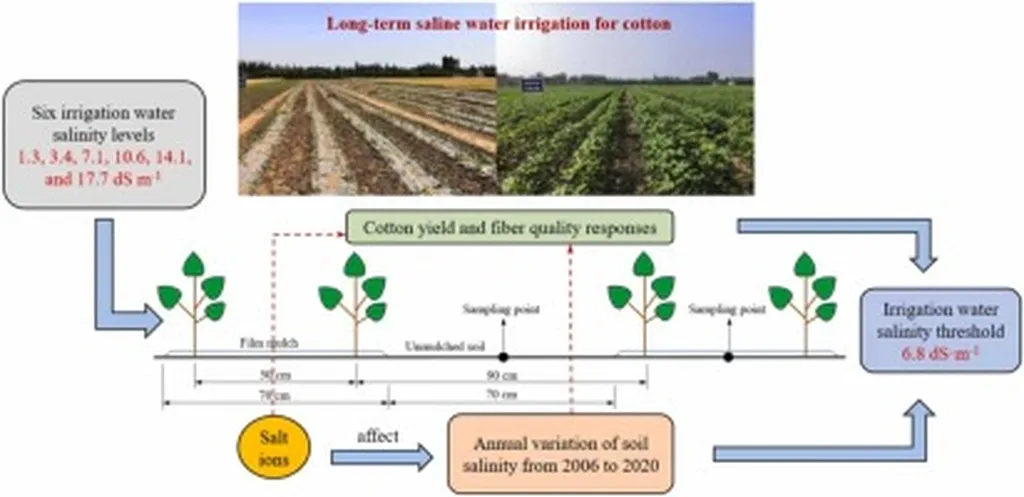In the arid landscapes of oasis agriculture, where water scarcity is a constant challenge, farmers are increasingly turning to saline water irrigation as a lifeline. But what does this strategy mean for the very soil that sustains their crops? A recent study published in *Agricultural Water Management* (translated as *Water Management in Agriculture*) sheds light on this pressing question, offering insights that could reshape irrigation practices and soil management in the energy sector.
Led by Rui Chen from the College of Water & Architectural Engineering at Shihezi University in China, the research delves into the intricate world of soil aggregates, exploring how saline water irrigation influences carbon sequestration and microbial communities. Over four years, Chen and his team irrigated a cotton field with water at varying salinity levels, ranging from a control group (0.87 g/L) to a highly saline treatment (8 g/L). The results were revealing.
“Increasing salinity elevated aggregate levels of salt cations, total nitrogen, soil organic carbon (SOC), and labile organic carbon (LOC),” Chen explained. “However, total carbon (TC), inorganic carbon (SIC), and microbial biomass carbon (MBC) decreased.” This finding suggests a complex interplay between salinity and soil carbon dynamics, with potential implications for soil fertility and crop productivity.
The study also uncovered significant changes in microbial diversity. While saline irrigation reduced soil fungal diversity, it did not significantly alter bacterial diversity. Interestingly, microbial diversity was strongly influenced by aggregate size, with the smallest aggregates (< 0.25 mm) harboring the highest fungal richness and bacterial diversity. "This indicates that soil structure plays a crucial role in maintaining microbial diversity under saline conditions," Chen noted.Network analysis further revealed that increasing salinity simplified bacterial community interactions but increased the proportion of coexisting species. Fungal community networks, however, showed no significant trends. These findings highlight the nuanced ways in which salinity impacts microbial communities, with potential consequences for soil health and ecosystem functioning.Redundancy analysis identified SOC, LOC, TC, and Na⁺ as the primary factors governing both bacterial and fungal communities. "Base cations and carbon fractions exerted a stronger influence on fungi," Chen added. This underscores the importance of managing soil carbon and nutrient levels to support microbial communities and maintain soil health.So, what does this mean for the energy sector? As the world grapples with water scarcity, the findings of this study could inform the development of more sustainable irrigation practices. By optimizing saline water irrigation management, farmers can maintain crop yield and soil structural stability, ultimately contributing to food security and economic stability in water-scarce regions.Chen and his team recommend a salinity threshold of ≤ 3 g/L to maintain sustainable crop yield and soil structural stability in regional cotton fields. This threshold could serve as a valuable guideline for farmers and policymakers, helping them balance the need for water conservation with the imperative of soil health.As the world continues to face the challenges of climate change and water scarcity, research like this is more critical than ever. By unraveling the complex interactions between salinity, soil aggregates, and microbial communities, Chen and his colleagues are paving the way for more sustainable and resilient agricultural practices. Their work not only advances our scientific understanding but also offers practical solutions for the energy sector, highlighting the vital role of soil health in our collective future.

